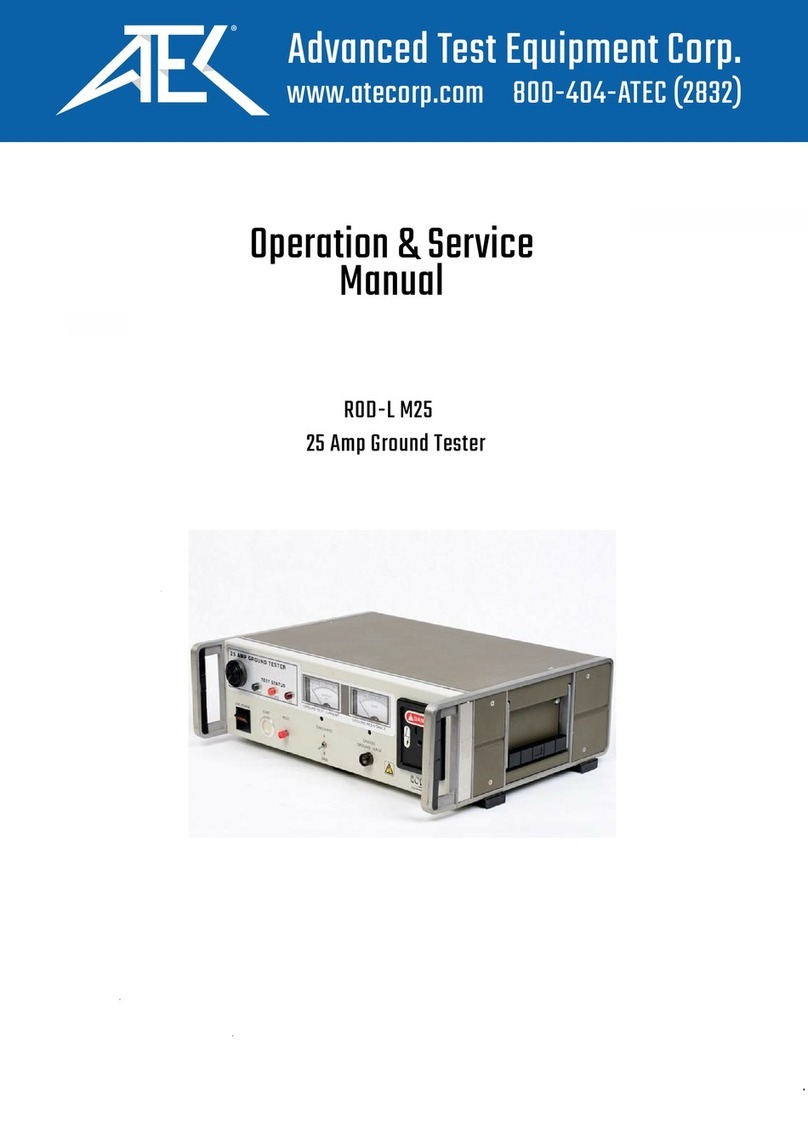lNTRODUCrI'lON
SECTION
I
1-1
GENERAL
1-2 This publication, which provides operating and servicinginstructions for
the ROD-L Electronics 25 amp Ground Testers is divided into five sections.
sections I describes the Instrument and list its specifications. Section
II
contains Installation Instructions and Operating Procedures. Section 111
contains Theory of Operation. Section IV contains Service and Calibration
Instructions. Section
V
contains Replacement Parts Information, Parts
Location Diagrams and Schematics.
1-3 25amp Ground Testers are Low Voltage testers with ground continuity
test capability for performance of ground tests in accordance with
applicable B.S.I., V.D.E. and I.E.C. standards.
1-4 The 25 amp ground test is one of many tests required by certification
agencies
as
proof of an instrument's ability to withstand power line
spikes without becoming a hazard to itself or the user. For example,
lighting, drastic load changes or power line outages can place short
duration spikes on power lines of many times nominal line voltage. The
gnd should be able todivert any leakage to the chassis without getting
damaged.
1-5 GENERAL DESCRIPTION
1-6 The ROD-L Model 25amp Ground Testers apply low voltage tothe device
under
test
for a duration of time preset from one second to
90
seconds.
The device under test is plugged into the front panel receptacle (or special
rear panel connector on some models). Test limits for total resistance
are preset by the user via a rear panel control. When the device under
test is defective, automatic circuitry turns off the low voltage and meter,
lights the FAIL lamp and activates an audible alarm. These audible and
visual alarms must be manually reset atfront panel or can be reset by
remote control (see options).
1-7 All Models incorporate a rapid, automatic electronic shutdown circuit to
turn off the low voltage within two milliseconds after a fault.
1-8 For operator use, the test cycle is fully automatic; accidental test
initiation is prevented by use of a recessed start switch. If ground fails
during the test, the Tester automatically activates failure operation, i.e.,
voltage is shut down and there is a visual and audible alarm.





























